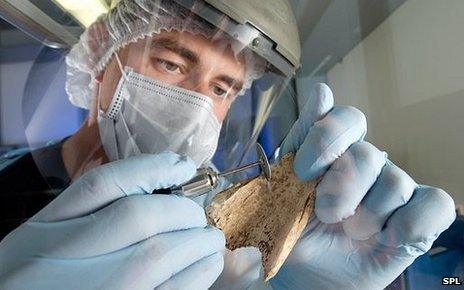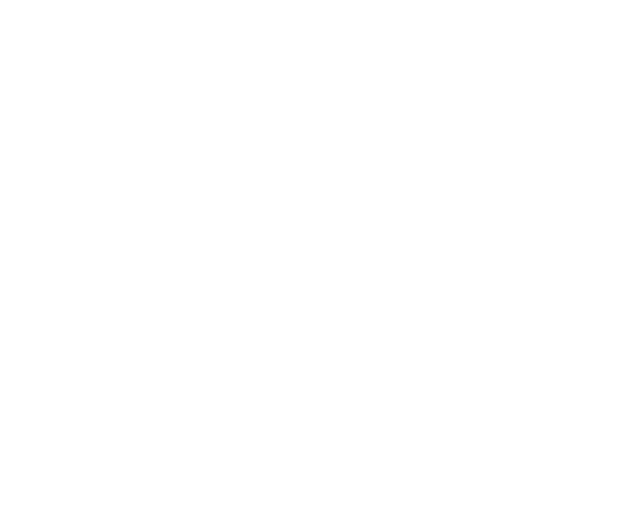A science news preview of 2012
- Published

The unexpected results seen by the Opera team are likely to come under further scrutiny in 2012
What scientific discoveries lie just around the corner in 2012?
Will we get the final word on the Higgs boson? And what is Nasa's next mission to Mars likely to turn up?
The BBC News website science team signs the office crystal ball out of the equipment cupboard to tease out the stories likely to make headlines over the coming year.
Fundamental questions
One news story we can bank on for 2012 is a definitive answer to the question: "Does the Higgs boson exist?" First proposed in the 1960s by English theoretical physicist Peter Higgs and others, the particle is a vital missing piece in the most accepted theory of particle physics. It is an essential and fundamental building block of the Universe, which explains why everything around us has "mass". Yet the particle has so far evaded detection by experiments.
But it can't hide for much longer. The Large Hadron Collider (LHC) has narrowed the "search area" down to a tiny strip in the allowed mass range for the Higgs. Physicists on two independent experiments have said they see hints of the Higgs boson in roughly the same place - at a mass of about 130 times that of the proton. But the statistical certainty is still not large enough to formally claim a discovery. The LHC re-starts in March 2012 following its winter shutdown period to save on electricity costs. And Dr Pippa Wells from the LHC's Atlas experiment told BBC News that if all goes well, scientists could have about 20 inverse femtobarns of data by next summer - about four times as much as they currently have. This should resolve the Higgs question once and for all.

Discoveries at the LHC could help answer fundamental questions
While the discovery of the Higgs would confirm what many particle physicists have thought for years, a more unexpected observation is likely to make headlines next year. Members of the Opera experiment at Gran Sasso laboratory in Italy noticed that neutrinos fired from Cern 730km away showed up 60 billionths of a second earlier than light would have. Though it seems like a tiny discrepancy, it is one that occurs consistently. The apparent breaking of the ultimate speed limit by neutrinos will surely be put under further scrutiny in 2012. Next year is likely to see the publication of the team's work in a scientific journal and there will also be independent cross-checks of the results from the US experiment Minos and the Japanese T2K experiment.
A home from home
The discovery of planets orbiting other stars has become so commonplace that each new one barely elicits mention in the media (unless they come as a six pack, external). The Kepler space telescope is consistently turning up exoplanet candidates in bulk; at the time of writing it had found a total of 2,326 of them (but there are probably more by the time of reading). What seems inevitable is that one of them will end up being a dead ringer for Earth.
Already telescopes have confirmed a Kepler find as the first roughly Earth-sized planet around a Sun-like star that could play host to water - but the confirmation of a far-flung rocky world with oceans and an atmosphere awaits. There are 47 promising chances in Kepler's catalogue already, and plenty more yet to be confirmed. Next year we are likely to see something decisively more like our home planet, and we can then move on to the more daunting but more intriguing questions about whether other planets host life.
Ancient jigsaw

Ancient DNA could reveal many more surprises about our past
Following the publication of genomes from two of our ancient evolutionary cousins - the Neanderthals and Denisovans - geneticists have been mining the information for insights into human history. Fascinating discoveries came to light in 2011, such as clear signs there was widespread interbreeding, external between our ancestors and the mysterious people known as the Denisovans in Asia. Indeed, we now know that present-day non-African people derive about 4% of their DNA from these ancient humans who interbred with our ancestors as the latter spread from Africa 60,000-70,000 years ago.
Sexual relations between so-called modern humans and archaic people they met introduced genes, external that help us cope with viruses to this day. Scientists are now on the hunt for other parts of the genome - acquired from Neanderthals, Denisovans or some other ancient group - that might have helped our ancestors adapt as they moved into new environments. Prof Svante Paabo, the leading researcher in this field, has also been studying for the relatively small number of genes that differentiate modern humans from their ancient cousins. This could yield clues to advantages that may have given our ancestors a leg up. The analysis of DNA from more recent humans may also shed light on unresolved questions from the past, such as the degree to which modern Europeans are descended from Palaeolithic hunters or Neolithic farmers. The upcoming publication of Oetzi the Iceman's genome could also provide clues to how populations have changed since the Stone Age.
Material world

Will graphene soon begin living up to its promise?
2011 saw a few advances in the world of materials science, including the first computer chip not made of silicon. But there was much discussion also of the now-familiar "wonder material, external" graphene, which has proven its mettle in a few applications; we may soon see it used in chemical detectors, external. As of 2011, it can be spun into fibres, external or conductive mats that may even get in on the game of stretchable electronics, external. Such electronics have been "just around the corner" for a number of years now. Crane your neck and we may finally see them.
But in the 21st Century, any discussion of materials must also include metamaterials - those engineered structures that play tricks with light (or, as we saw in June, with sound, external) and can lead to "invisibility cloaking". The first steps toward invisibility cloaks necessarily involved making the effect work with visible light, external. But what is likely to happen before we get Harry Potter-style cloaks is that metamaterials will sneak into other applications. Next year, we will most likely see what is called "gain" in the materials, resulting in lasers that are actually smaller than the wavelength of the light they produce. Integrating those with existing electronics ideas could, in ensuing years, speed up computers and communications greatly. And applied on the outside, the same stuff could make them invisible - if ever we should need that.
Mission to Mars
Nasa's Mars Science Laboratory (MSL) is en route to its rust-coloured target. The biggest and most capable robot rover ever sent to the surface of another planet launched successfully from Florida in November. It is due to arrive at Mars on 6 August 2012 (GMT). But the high failure rate of Mars missions has led to jokes about a "great galactic ghoul" that swallows up missions to the Red Planet.
MSL will use a new rocket-powered descent system able to place the $2.5bn rover very precisely in the 150-km wide depression at the planet's equator where the rover will serve out its mission. If MSL can get safely to the surface, it will "wake up" in one of the most exciting locations on the planet. Scientists have sent MSL to explore Gale Crater because it is the geological equivalent of a sweet shop.
One of the deepest holes on the Red Planet, Gale has a central mound with a series of layers that cut across a billion years of Martian history. Some of the rocks inside the crater may have been deposited when Mars was a wetter place and perhaps more hospitable to life. Scientists on the mission stress the rover is not there to search for life itself, but it should be able to describe how comfortable a home Mars once was for any potential life forms, along with identifying a range of complex carbon-containing molecules, including some of the building blocks of biology.

- Published24 December 2011
- Published31 December 2010
- Published25 December 2010